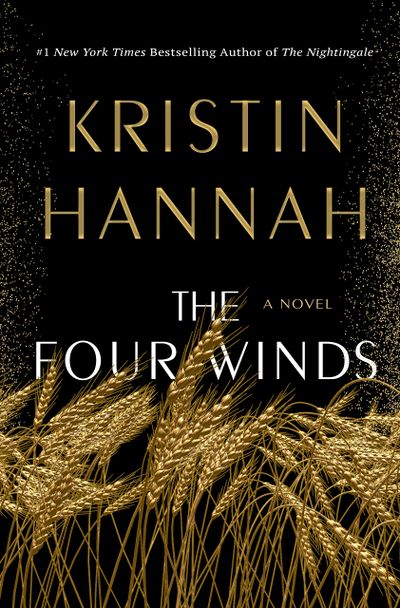‘Four Winds’ focuses on women warriors of the Great Depression

We have a certain fascination for the cautious tales of the Great Depression. We hear it all the time. “The worst economic disaster since the Great Depression … worst unemployment since the Great Depression …” The decade from 1929 to 1939 has become the benchmark for suffering in the U.S.
During times of crisis, as we’ve seen the past year, we need to remind ourselves that others have faced grave challenges and overcome them. Our parents, grandparents and great-grandparents battled economic collapse, environmental disaster and the worldwide threat of fascism.
They watched their parents go hungry so they could eat. And they emerged victorious, raising families who lived long, fulfilled lives and dying peacefully in their sleep. The Depression Era children, the swing kids, saved the world.
Now, a 100-year pandemic threatens our lives. A financial canyon separates classes, forcing others to question the privileges afforded some and denied others. Environmental disasters ravage the land with unprecedented hurricanes and wildfires.
With her latest novel, “The Four Winds,” Seattle author Kristin Hannah looks for answers in the past. Her novel is not too far flung from the world we recently explored through Spokane writer Jess Walter in “The Cold Millions.” But this novel provides one important change of perspective. Hannah gives us the point of view of the women.
“It was always about men,” Hannah writes in her opening pages. “They seemed to think it meant nothing to cook and clean and bear children and tend gardens. But we women of the Great Plains worked from sunup to sundown, too, until we were as dry and as baked as the land we loved.”
Elsa Wolcott is even more an unlikely lead protagonist than Tom Joad in “The Grapes of Wrath,” the classic story by which “The Four Winds” likely will draw comparisons. Labeled as sickly and unattractive, not the kind of woman who would attract a “good” husband, Elsa is discounted by her upscale Texas family.
She grows up in solitary confinement in the corners of her own room, dreaming of the world she reads in books, the characters of novels being her closest friends. Trying to break out of her home prison, Elsa finds a rambunctious boy who shows her the kind of attention she’s never experienced.
It’s a sense she feels might be love, something she doesn’t experience in the house where she lives. But in Elsa’s life, even the sex is bad. She ends up unsatisfied and pregnant. Like most of the women of that era, she’s ostracized from her self-righteous family and left at the home of baby’s father.
Through the Martinelli family, Sicilian immigrants who have worked to solidify their place in America through farming in the Texas panhandle, Elsa finally finds a place where she’s accepted. She discovers roots with the crops on the Martinelli’s farm and love through Tony and Rose, grandparents for her children. For once, she’s found a home.
That home, however, is literally swept out from under her by the Dust Bowl. Raging storms bringing clouds that churn up the farms and have children coughing up dirt. Elsa’s son, Ant, faces death.
Her daughter, Loreda, blames her mother for all that is wrong with the world. The government pleads the farmers to stop planting crops and help heal the land. The economy collapses. Suffering is the new normal.
Hannah began writing the novel three years ago in the shadow of global warming and divisive political strife. She finished it having buried close friends who had died of COVID-19 and watching communities devastated by food pantry lines that snaked around suburban blocks.
In her story, the Dust Bowl disrupts schools and siphons jobs. Franklin Roosevelt’s New Deal doesn’t filter down to the rural farmlands. Youngsters wearing old World War I gas masks protect themselves from the dust storms.
The men in this story escape the disasters by hopping the next freight out of town. The women left behind must save their world. Indeed, the few male characters in “The Four Winds” are but stick figures.
They are barely relevant except in one instance to serve as an object of desire and a means to brief satisfaction and comfort – in other words, as women usually are portrayed in novels dominated by men. Elsa’s son, Ant, who spends the book as a small boy, is the most well-developed male character in “The Four Winds.”
The women band together to battle poverty, hold together the shaky foundations of home and feed the children the mothers risked their very lives to give breath, if their babies survived at all. Throughout the story, Hannah weaves the intricate friendships women forge to survive and support one another and the tricky, volatile bond between mother and daughter.
Elsa’s relationship with Loreda drives the novel. Elsa must decide whether to remain at home and fight Mother Nature and the dust storms that threaten to bury them or flee west to California. The siren song beckons: “Go west, young woman.”
All her life, Elsa has seen herself as less than she should be: not as beautiful as people expect, not as strong as life demanded, not as good a mother as her children needed. But through crisis, forced to choose between her happiness and her children’s, she might find the strength that her life requires.
She also reveals a mother Loreda never realized she had. “The Four Winds” blows along at a brisk pace with women being the warriors leading the crusade because it’s not always about the men.
Ron Sylvester is a journalist who lives in Kansas and is the son of Depression Era parents. He reviews books for The Spokesman-Review.